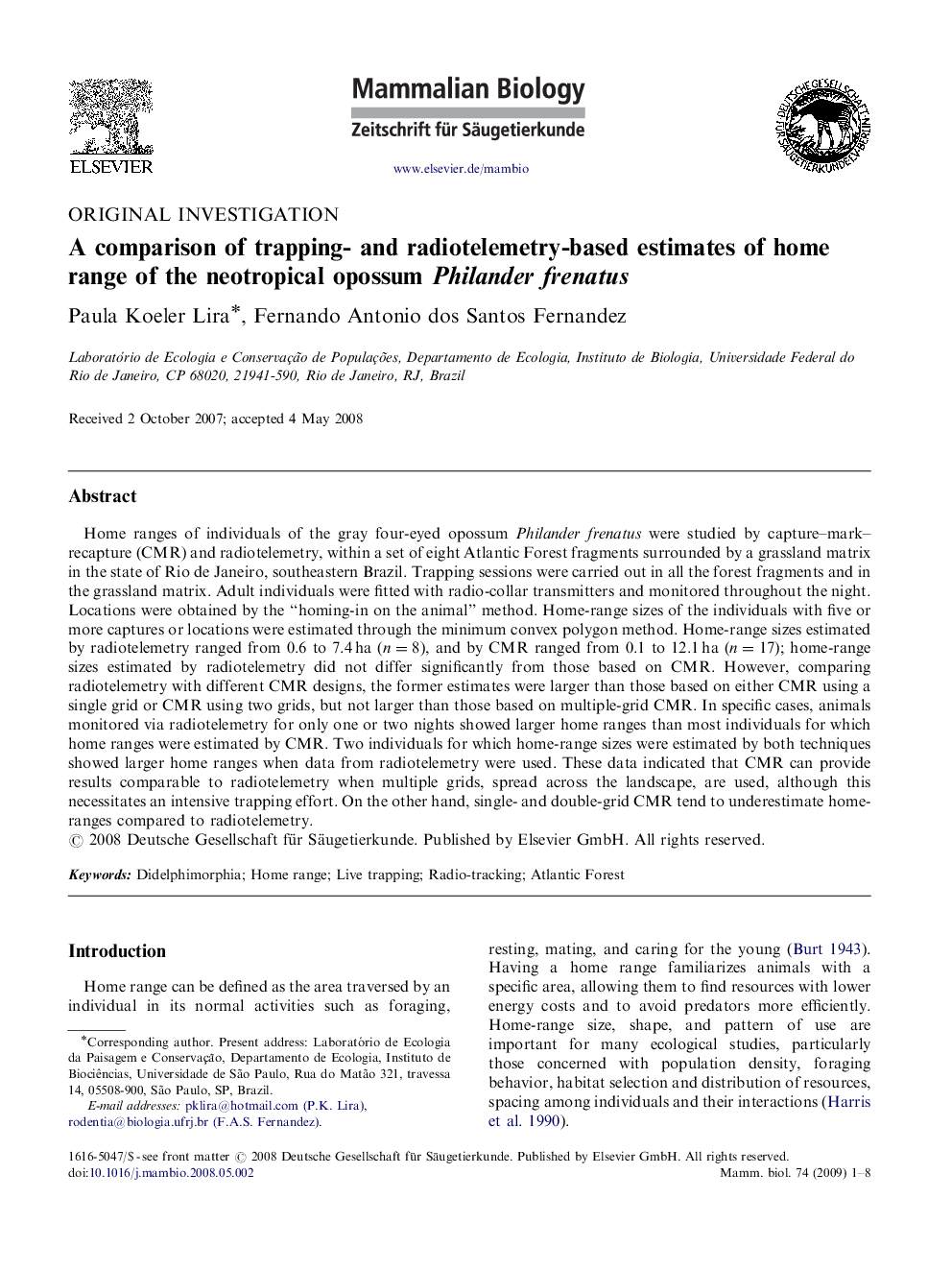| Article ID | Journal | Published Year | Pages | File Type |
|---|---|---|---|---|
| 2193985 | Mammalian Biology - Zeitschrift für Säugetierkunde | 2009 | 8 Pages |
Home ranges of individuals of the gray four-eyed opossum Philander frenatus were studied by capture–mark–recapture (CMR) and radiotelemetry, within a set of eight Atlantic Forest fragments surrounded by a grassland matrix in the state of Rio de Janeiro, southeastern Brazil. Trapping sessions were carried out in all the forest fragments and in the grassland matrix. Adult individuals were fitted with radio-collar transmitters and monitored throughout the night. Locations were obtained by the “homing-in on the animal” method. Home-range sizes of the individuals with five or more captures or locations were estimated through the minimum convex polygon method. Home-range sizes estimated by radiotelemetry ranged from 0.6 to 7.4 ha (n=8), and by CMR ranged from 0.1 to 12.1 ha (n=17); home-range sizes estimated by radiotelemetry did not differ significantly from those based on CMR. However, comparing radiotelemetry with different CMR designs, the former estimates were larger than those based on either CMR using a single grid or CMR using two grids, but not larger than those based on multiple-grid CMR. In specific cases, animals monitored via radiotelemetry for only one or two nights showed larger home ranges than most individuals for which home ranges were estimated by CMR. Two individuals for which home-range sizes were estimated by both techniques showed larger home ranges when data from radiotelemetry were used. These data indicated that CMR can provide results comparable to radiotelemetry when multiple grids, spread across the landscape, are used, although this necessitates an intensive trapping effort. On the other hand, single- and double-grid CMR tend to underestimate home-ranges compared to radiotelemetry.
